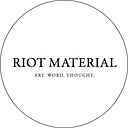Burnt Offerings In Ross Bleckner’s Pharmaceutria
at Petzel Gallery, NYC (through June 15)
Reviewed by Phoebe Hoban
Ross Bleckner’s luminous canvases of the 1980s and 90s, often rendered in grey and evoking distant galaxies, possess an otherworldly light, which is apt, since many of his paintings of that time memorialize those lost to the relentless onslaught of AIDS.
Bleckner, whose first show in five years is on exhibit at the Petzel Gallery through June 15, is still making elegiac, gauzy images of loss. But this time, the loss that plagues us is, sadly, self-inflicted: our current political and social divisiveness, and more portentously, the plight of our planet, that Garden of Eden we have managed to more or less destroy.
The 15 paintings in Pharmaceutria themselves have literally been “destroyed,” during Bleckner’s process of using a blowtorch to ignite the paint, (burnt offerings?) causing it to react and, as he has put it, “resurrect.” But the spiritual quality of the canvases has as much to do with their imagery — or intentional lack of it — than with their creative technique.
Bleckner remains a master of his own genre, a lyrical abstraction that exudes a potent and mystical sense of memento mori. Pharmaceutria, which means sorceress in Latin, uses as a central reference El Greco’s 1590 Agony in the Garden of Gethsemane, in which Christ, kneeling, is heralded by an angel who holds a golden chalice in one hand, while at the same time Judas and the troops are approaching him through a dry, eviscerated landscape. If all goes according to religious plan, resurrection cannot be far behind.
Bleckner’s Burn Painting (Agony in the Garden, After El Greco,) the metaphorical key to the series, features white, serpentine strands, like a painted form of smoke signals, rhythmically woven across a charcoal-grey background, (perhaps a veiled allusion to El Greco’s torqued forms). At the center of the painting, almost lost to view, is a tiny floral bouquet, an image that resurfaces, like a repeated refrain, in some of the other canvases.
The smoke-like wisps that transit this canvas serve as ideograms in the artist’s visual vocabulary for the works in Pharmaceutria. These ghostly symbols morph across Burn Painting (How Did This Happen), in which they are somewhat distended and strewn with green; the pink, red and white posy flung to the far right edge of the canvas. And in California, horizontally flowing white and green strands are intersected with large daubs of vertical grey. They also appear, like a gathering storm, in Wanting to Fall, and, in a more articulated, almost leafy-looking form, in When you Think you have Nothing.
The series is not entirely devoid of human presence. The Centuries is a spectral, possibly ancestral, group portrait; I Met a Man is populated with a dark sea of disembodied faces. Nor is it without a trace of hope. Wanting to Fall, despite its title, contains vaguely biomorphic shapes that hint at a glimmer of growth. Your Map of This Place, posits bright red splashes, like roses (or Monet-like water lilies) at the bottom of the canvas. And the titular painting, Pharmaceutria, is grid-based, and contains not just one, but two bouquets at its center. Nearer, Deeper Firmer, the starkest painting in the series, is something of a return to Bleckner’s signature galaxy imagery, with its resonant tone of cosmic calm.
Bleckner’s work at its best is a form of painted poetry, both meditative and revelatory. Each of these paintings stands strongly on its own, a single sonnet. As a series, it is an anthem not only to what we have become — but to what the artist seems to be optimistically suggesting we still could become. As Joni Mitchell memorably sings in her celebrated song, “Woodstock,” “We are stardust, we are golden. We are billion year old carbon. And we got to get ourselves back to the garden.”
@riotmaterial
riotmaterial.com
